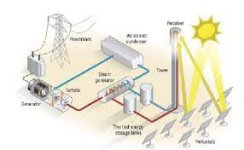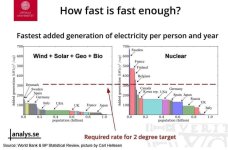lpetrich
Contributor
Global Solar Atlas - has how much sunlight each bit of land gets.
As I've posted earlier here, I'm seeing a buzz about hydrogen, the sort of buzz that I saw about storage a few years back, and about photovoltaic cells a few years before storage. I remember when I first got interested in renewable energy, over 10 years ago. It seemed to me that wind energy was the best-developed renewable resource.
LA could soon be home to the nation’s largest green hydrogen infrastructure system – pv magazine USA - "Southern California Gas Company is submitting an application to build a 10 to 20GW electrolyzer and 25 to 35GW of new and curtailed wind and solar, along with 2GW of energy storage, to deliver green hydrogen to the Los Angeles Basin."
It will use a reversible fuel cell to do electrolysis, and much of the hydrogen that it will produce will be stored in underground tanks. Thus using hydrogen as a form of energy storage.
After vetoing US subsidies for clean hydrogen, Manchin seeks billions of federal dollars for fossil-fuel H2 in home state | Recharge - "The key Democrat swing voter in the Senate, along with Republicans colleagues, wants to build a 'clean hydrogen' hub in West Virginia based on coal and natural gas"
As I've posted earlier here, I'm seeing a buzz about hydrogen, the sort of buzz that I saw about storage a few years back, and about photovoltaic cells a few years before storage. I remember when I first got interested in renewable energy, over 10 years ago. It seemed to me that wind energy was the best-developed renewable resource.
LA could soon be home to the nation’s largest green hydrogen infrastructure system – pv magazine USA - "Southern California Gas Company is submitting an application to build a 10 to 20GW electrolyzer and 25 to 35GW of new and curtailed wind and solar, along with 2GW of energy storage, to deliver green hydrogen to the Los Angeles Basin."
It will use a reversible fuel cell to do electrolysis, and much of the hydrogen that it will produce will be stored in underground tanks. Thus using hydrogen as a form of energy storage.
‘Green hydrogen is now competitive with fossil fuels’ | ArcelorMittal among offtakers at massive 7.4GW project in Spain | Recharge - "HyDeal España, the first part of the 67GW HyDeal Ambition plan, will produce renewable H2 from 9.5GW of solar power and create an industrial hub to decarbonise steel, fertiliser and other products"At the moment, the largest hydrogen electrolyzer in the world is Baofeng Energy’s 150 MW facility in China. But larger facilities are already under construction, and there has been a bevy of newly announced hydrogen electrolyzers recently, especially from Australia.
After vetoing US subsidies for clean hydrogen, Manchin seeks billions of federal dollars for fossil-fuel H2 in home state | Recharge - "The key Democrat swing voter in the Senate, along with Republicans colleagues, wants to build a 'clean hydrogen' hub in West Virginia based on coal and natural gas"



